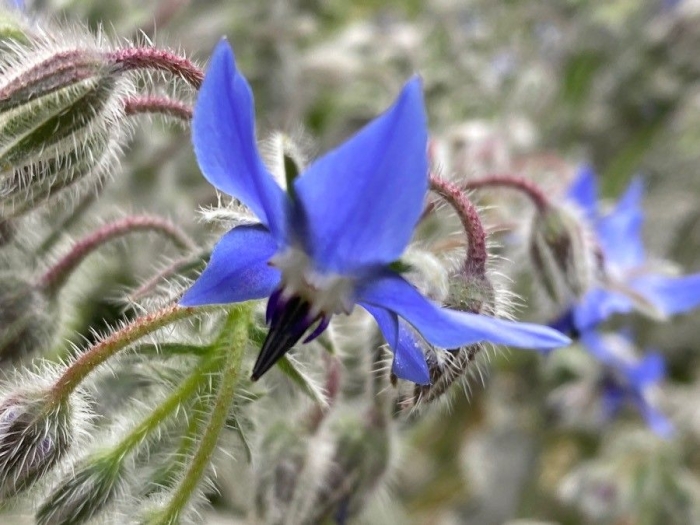Common Borage
(Borago officinalis)
Common Borage (Borago officinalis)
/
/

Francois Mansour
CC BY-SA 4.0



























































Estimated Native Range
Summary
Common Borage is valued for its ornamental flowers and its utility in companion planting, where it is known to benefit various vegetables and fruits by attracting pollinators and deterring pests. It is easy to grow and maintain, making it a favorite among gardeners. Borage prefers full sun to part shade and can tolerate a range of soil types, provided they have good drainage. It requires low to medium amounts of water, making it relatively drought-tolerant once established. However, gardeners should be cautious as Borage can self-seed prolifically and may become invasive outside its native range. It is advisable to remove spent flowers to prevent unwanted spread.CC BY-SA 4.0
Plant Description
- Plant Type: Herb
- Height: 1-3 feet
- Width: 0.8-1.5 feet
- Growth Rate: Moderate
- Flower Color: Blue
- Flowering Season: Summer
- Leaf Retention:
Growth Requirements
- Sun: Full Sun, Part Shade
- Water: Low, Medium
- Drainage: Slow, Medium, Fast
Common Uses
Bee Garden, Border Plant, Butterfly Garden, Deer Resistant, Drought Tolerant, Edible*Disclaimer: Easyscape's listed plant edibility is for informational use. Always verify the safety and proper identification of any plant before consumption., Fragrant, Low Maintenance, Potted Plant, Salt Tolerant
Natural Habitat
Originally native to the Mediterranean region, including areas such as North Africa, Europe, and the Middle East
Other Names
Common Names: Beebread, Beeplant, Borage, Talewort, Starflower, Bee Plant, Einjähriger Borretsch, Gurkenkraut, Borretsch, Garten-Boretsch
Scientific Names: , Borago officinalis, Borrago officinalis, Borago advena, Borago aspera, Borago hortensis,
GBIF Accepted Name: Borago officinalis L.